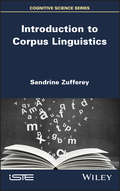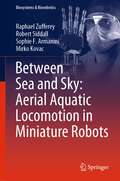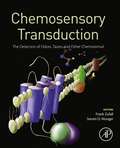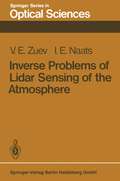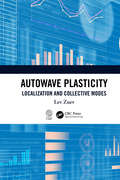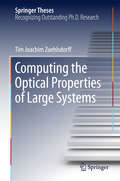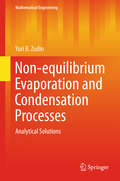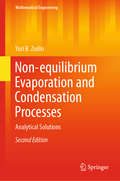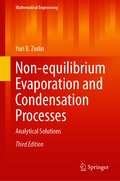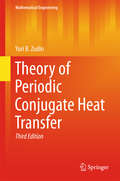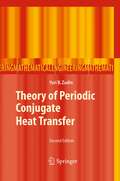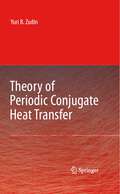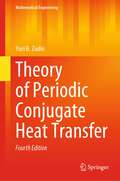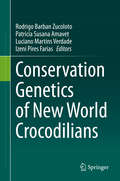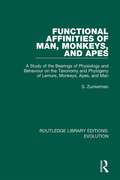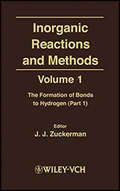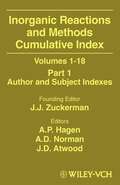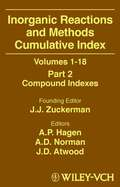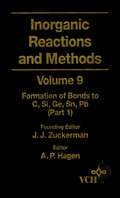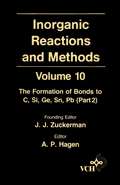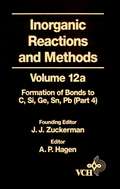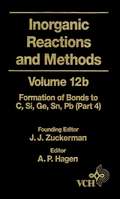- Table View
- List View
Introduction to Corpus Linguistics
by Sandrine ZuffereyOver the past decades, the use of quantitative methods has become almost generalized in all domains of linguistics. However, using these methods requires a thorough understanding of the principles underlying them. Introduction to quantitative methods in linguistics aims at providing students with an up-to-date and accessible guide to both corpus linguistics and experimental linguistics. The objectives are to help students developing critical thinking about the way these methods are used in the literature and helping them to devise their own research projects using quantitative data analysis.
Introduction to Corpus Linguistics
by Sandrine ZuffereyOver the past decades, the use of quantitative methods has become almost generalized in all domains of linguistics. However, using these methods requires a thorough understanding of the principles underlying them. Introduction to quantitative methods in linguistics aims at providing students with an up-to-date and accessible guide to both corpus linguistics and experimental linguistics. The objectives are to help students developing critical thinking about the way these methods are used in the literature and helping them to devise their own research projects using quantitative data analysis.
Between Sea and Sky: Aerial Aquatic Locomotion in Miniature Robots (Biosystems & Biorobotics #29)
by Raphael Zufferey Robert Siddall Sophie F. Armanini Mirko KovacThis book reports on the state of the art in the field of aerial-aquatic locomotion, focusing on the main challenges concerning the translation of this important ability from nature to synthetic systems, and describing innovative engineering solutions that have been applied in practice by the authors at the Aerial Robotics Lab of Imperial College London. After a general introduction to aerial-aquatic locomotion in nature, and a summary of the most important engineering achievements, the book introduces readers to important physical and mathematical aspects of the multimodal locomotion problem. Besides the basic physics involved in aerial-aquatic locomotion, the role of different phenomena happening in fluids, or those due to structural mechanics effects or to power provision, are presented in depth, across a large dimension range, from millimeters to hundreds of meters. In turn, a practice-oriented discussion on the obstacles and opportunities of miniaturization, for both robots and animals is carried out. This is followed by applied engineering considerations, which describe relevant hardware considerations involved in propulsion, control, communication and fabrication. Different case studies are analyzed in detail, reporting on the latest research carried out by the authors, and covering topics such as propulsive aquatic escape, the challenging mechanics of water impact, and a hybrid sailing and flying aircraft. Offering extensive and timely information on the design, construction and operation of small-scale robots, and on multimodal locomotion, this book provides researchers, students and professionals with a comprehensive and timely reference guide to the topic of aerial-aquatic locomotion, and the relevant bioinspired approaches. It is also expected to inspire future research and foster a stronger multidisciplinary discussion in the field.
Chemosensory Transduction: The Detection of Odors, Tastes, and Other Chemostimuli
by Frank Zufall Steven D. MungerWritten by leaders in the field of chemosensation, Chemosensory Transduction provides a comprehensive resource for understanding the molecular mechanisms that allow animals to detect their chemical world. The text focuses on mammals, but also includes several chapters on chemosensory transduction mechanisms in lower vertebrates and insects. This book examines transduction mechanisms in the olfactory, taste, and somatosensory (chemesthetic) systems as well as in a variety of internal sensors that are responsible for homeostatic regulation of the body. Chapters cover such topics as social odors in mammals, vertebrate and invertebrate olfactory receptors, peptide signaling in taste and gut nutrient sensing. Includes a foreword by preeminent olfactory scientist Stuart Firestein, Chair of Columbia University’s Department of Biological Sciences in New York, NY. Chemosensory Transduction describes state-of-the-art approaches and key findings related to the study of the chemical senses. Thus, it serves as the go-to reference for this subject for practicing scientists and students with backgrounds in sensory biology and/or neurobiology. The volume will also be valuable for industry researchers engaged in the design or testing of flavors, fragrances, foods and/or pharmaceuticals.Provides a comprehensive overview for all chemosensory transduction mechanismsValuable for academics focused on sensory biology, neurobiology, and chemosensory transduction, as well as industry researchers in new flavor, fragrance, and food testingEdited by leading experts in the field of olfactory transductionFocuses on mammals, but lower vertebrates and invertebrate model systems are also included
Inverse Problems of Lidar Sensing of the Atmosphere (Springer Series in Optical Sciences #29)
by V.E. Zuev I.E. NaatsThis monograph undertakes to present systematically the methods for solving inverse problems of lidar sensing of the atmosphere, with emphasis on lidar techniques that are based on the use of light scattering by aerosols. The theory of multi-frequency lidar sensing, as a new method for studying the microphysical and optical characteristics of aerosol formations, is also pre sented in detail. The possibilities of this theory are illustrated by the experimental results on microstructure analysis of tropospheric and low stratospheric aerosols obtained with ground-based two- and three-frequency lidars. The lidar facilities used in these experimental studies were construc ted at the Institute of Atmospheric Optics S8 USSR Academy of Sciences. Some aspects of remote control of dispersed air pollution using lidar systems are also considered. A rigorous theory for inverting the data of polarization lidar measure ments is discussed, along with its application to remote measurement of the complex index of refraction of aerosol substances and the microstructure pa rameters of background aerosols using double-ended lidar schemes. Solutions to such important problems as the separation of contributions due to Rayleigh molecular and Mie-aerosol light scattering into the total backscatter are ob tained by using this theory. Lidar polarization measurements are shown to be useful in this case. The efficiency of the methods suggested here for inter preting the lidar polarization measurements is illustrated by experimental results on the investigation of the microphysical parameters of natural aero sols and artificial smokes using polarization nephelometers.
Autowave Plasticity: Localization and Collective Modes
by Lev ZuevAutowave Plasticity: Localization and Collective Modes discusses the nature of plastic flow in solids associated with the development of a localized plastic flow. Written by an authority in the field, the author demonstrates how patterns of localized plastic flow are associated with autowave modes that are generated in a deformable sample and delivers a complete work on the subject. Key Features An original work on the nature of plastic flows in solids, particularly metals and crystals Focuses on plastic flow as an autowave process Contains elements of theories, experimental considerations, and numerical modeling This reference will help readers with creating experimental methods to observe or localize plastic flow and with the modeling of plastic flows. It is a valuable reference for graduate students and research specialists working in material science.
Autowave Plasticity: Localization and Collective Modes
by Lev ZuevAutowave Plasticity: Localization and Collective Modes discusses the nature of plastic flow in solids associated with the development of a localized plastic flow. Written by an authority in the field, the author demonstrates how patterns of localized plastic flow are associated with autowave modes that are generated in a deformable sample and delivers a complete work on the subject. Key Features An original work on the nature of plastic flows in solids, particularly metals and crystals Focuses on plastic flow as an autowave process Contains elements of theories, experimental considerations, and numerical modeling This reference will help readers with creating experimental methods to observe or localize plastic flow and with the modeling of plastic flows. It is a valuable reference for graduate students and research specialists working in material science.
Computing the Optical Properties of Large Systems (Springer Theses)
by Tim Joachim ZuehlsdorffThis work addresses the computation of excited-state properties of systems containing thousands of atoms. To achieve this, the author combines the linear response formulation of time-dependent density functional theory (TDDFT) with linear-scaling techniques known from ground-state density-functional theory. This extends the range of TDDFT, which on its own cannot tackle many of the large and interesting systems in materials science and computational biology. The strengths of the approach developed in this work are demonstrated on a number of problems involving large-scale systems, including exciton coupling in the Fenna-Matthews-Olson complex and the investigation of low-lying excitations in doped p-terphenyl organic crystals.
Non-equilibrium Evaporation and Condensation Processes: Analytical Solutions (Mathematical Engineering)
by Yuri B. ZudinThis monograph presents a comprehensive treatment of analytical solutions to problems in the area of non-equilibrium evaporation and condensation processes. The book covers, among others, topics such as systems of conversation equations for molecular fluxes of mass, momentum and energy within the Knudsen layer, spherical growth of vapor bubbles in volumes of highly superheated liquid. The target audience primarily comprises research experts in the field of thermodynamics and fluid dynamics, but the book may also be beneficial for graduate students alike.
Non-equilibrium Evaporation and Condensation Processes: Analytical Solutions (Mathematical Engineering)
by Yuri B. ZudinThis monograph is focused mostly on the exposition of analytical methods for the solution of problems of strong phase change. A new theoretical model is proved useful in describing, with acceptable accuracy, problems of strong evaporation and condensation. The book is the first to treat the problem of asymmetry for evaporation/condensation. A semi-empirical model for the process is proposed for purposes of practical calculation of the process of strong evaporation. The “limiting schemes” of the vapor bubble growth are analyzed. The thermo-hydrodynamic problem of evaporating meniscus of a thin liquid film on a heated surface is considered. A theoretical analysis of the problem of evaporation of a drop levitating over a vapor cushion is performed. The problem of vapor condensation upon a transversal flow around a horizontal cylinder is considered. The second edition is extended by (i) the conjugate “strong evaporation - heat conduction” problem, (ii) the influence of accommodation coefficients on intensive processes of evaporation and condensation, (iii) the problem of supersonic condensation. This book is the first to present a comprehensive theoretical approach of boiling problems: nucleate boiling, superfluid helium phase transition, similarity between pseudo-boiling and subcritical pressure nucleate boiling. The target audience primarily comprises research experts in the field of thermodynamics and fluid dynamics, but the book may also be beneficial for graduate students.
Non-equilibrium Evaporation and Condensation Processes: Analytical Solutions (Mathematical Engineering)
by Yuri B. ZudinThis present book is concerned with analytical approaches to statement and solution of problems of non-equilibrium evaporation and condensation. From analytical solutions, one is capable to understand and represent in a transparent form the principal laws, especially in the study of a new phenomenon or a process. This is why analytical methods are always employed on the first stage of mathematical modeling. Analytical solutions are also used as test models for validation of results numerical solutions. Non-equilibrium evaporation and condensation processes play an important role in a number of fundamental and applied problems: laser methods for processing of materials, depressurization of the protection cover of nuclear propulsion units, solar radiation on a comet surface, explosive boiling of superheated liquid, thermodynamic principles of superfluid helium. Analytical relations provide an adequate description of the essence of a physical phenomenon.
Theory of Periodic Conjugate Heat Transfer (Mathematical Engineering #5)
by Yuri B. ZudinThis book provides a detailed yet comprehensive presentation of the theory of periodic conjugate heat transfer. It contains an analytical approach to the effects of thermophysical and geometrical properties of a solid body on the experimentally determined heat transfer coefficient. The main objective of the book is a simplified description of the interaction between a solid body and a fluid as a boundary value problem of the heat conduction equation.This third and extended edition covers Wall's thermal effect on Landau stability, gas bubbles pulsations in fluids, and also the interplay between periodic conjugate heat transfer and non-Fourier heat conduction. The target audience primarily comprises research experts in the field of thermodynamics and fluid dynamics, but the book may also be beneficial for graduate students in engineering.
Theory of Periodic Conjugate Heat Transfer (Mathematical Engineering)
by Yuri B. ZudinThis book presents the theory of periodic conjugate heat transfer in a detailed way. The effects of thermophysical properties and geometry of a solid body on the commonly used and experimentally determined heat transfer coefficient are analytically presented from a general point of view. The main objective of the book is a simplified description of the interaction between a solid body and a fluid as a boundary value problem of the heat conduction equation for the solid body. At the body surface, the true heat transfer coefficient is composed of two parts: the true mean value resulting from the solution of the steady state heat transfer problem and a periodically variable part, the periodic time and length to describe the oscillatory hydrodynamic effects. The second edition is extended by (i) the analysis of stability boundaries in helium flow at supercritical conditions in a heated channel with respect to the interaction between a solid body and a fluid; (ii) a periodic model and a method of heat transfer simulation in a fluid at supercritical pressure and (iii) a periodic quantum-mechanical model for homogeneous vapor nucleation in a fluid with respect to nanoscale effects.
Theory of Periodic Conjugate Heat Transfer
by Yuri B. ZudinHere is a new method for calculating heat transfer in coupled convective-conductive fluid-wall systems under periodical intensity oscillations in fluid flow. The true steady state mean value of the heat transfer coefficient must be multiplied by a newly defined coupling factor, which is always smaller than one and depends on the coupling parameters Biot number, Fourier number as well as dimensionless geometry and oscillation parameters. Includes characteristic solved problems, with tables and diagrams.
Theory of Periodic Conjugate Heat Transfer (Mathematical Engineering)
by Yuri B. ZudinAn original method of investigation of the conjugate conductive-convective problem of periodic heat transfer is developed. The novelty of the approach is that a particular conjugate problem is replaced by a general boundary-value problem for the heat conduction equation in the solid. Within the framework of the hyperbolic model of thermal conductivity, the effect of self-reinforcement of the degree of conjugation by increasing the period of oscillations is found. The processes of hydrodynamics and heat exchange with periodic internal structure are considered: periodic model of turbulent heat transfer, hydrodynamic instability, bubbles dynamics in liquid, and model of evaporating meniscus. The book is intended as a source and reference work for researchers and graduate students interested in the field of conjugate heat transfer.
Conservation Genetics of New World Crocodilians
by Rodrigo Barban Zucoloto Patricia Susana Amavet Luciano Martins Verdade Izeni Pires FariasThis book aims to be a comprehensive review of the literature on the conservation genetics of the New World crocodilians, from the biological and demographical aspects of the living species to the application of molecular techniques for conservation purposes. It covers the current status of the molecular genetics applied to phylogenetics, phylogeography, diversity, kinship and mating system, and hybridization, as well its implications for decision making with regards to the conservation of these species at academic and governmental levels. This book can be used as a guide for graduate and undergraduate students to understand how conservation genetics techniques are carried out and how they can help preserve not only crocodilians but also other living species.
Functional Affinities of Man, Monkeys, and Apes: A Study of the Bearings of Physiology and Behaviour on the Taxonomy and Phylogeny of Lemurs, Monkeys, Apes, and Man (Routledge Library Editions: Evolution #15)
by S. ZuckermanOriginally published in 1933 Functional Affinities of Man, Monkeys and Apes gives a taxonomic and phylogenetic survey and the findings of diverse experimental investigations of lemurs, monkeys, and apes. The book discusses the inter-relationships of different Primates and emphasizes seldom-used approaches to the question of primate phylogeny. The book attempts to show how little they have been systematically tried, and argues for a regard to the proper place of functional investigations in the study of the classification and evolution of Primates. This book will be of interest to anthropologists, scientists and historians alike.
Functional Affinities of Man, Monkeys, and Apes: A Study of the Bearings of Physiology and Behaviour on the Taxonomy and Phylogeny of Lemurs, Monkeys, Apes, and Man (Routledge Library Editions: Evolution #15)
by S. ZuckermanOriginally published in 1933 Functional Affinities of Man, Monkeys and Apes gives a taxonomic and phylogenetic survey and the findings of diverse experimental investigations of lemurs, monkeys, and apes. The book discusses the inter-relationships of different Primates and emphasizes seldom-used approaches to the question of primate phylogeny. The book attempts to show how little they have been systematically tried, and argues for a regard to the proper place of functional investigations in the study of the classification and evolution of Primates. This book will be of interest to anthropologists, scientists and historians alike.
Inorganic Reactions and Methods, The Formation of Bonds to Hydrogen (Inorganic Reactions and Methods #43)
by J. J. Zuckerman A. P. HagenBoasting numerous industrial applications, inorganic chemistry forms the basis for research into new materials and bioinorganic compounds such as calcium that act as biological catalysts. Now complete, this highly acclaimed series presents current knowledge in all areas of inorganic chemistry, including chemistry of the elements; organometallic, polymeric and solid-state materials; and compounds relevant to bioinorganic chemistry.
Inorganic Reactions and Methods, Cumulative Index, Part 1: Author and Subject Indexes (Inorganic Reactions and Methods #40)
by J. J. ZuckermanHere is the comprehensive two-volume index to all of the compounds, subjects, and authors featured in the eighteen-volume Inorganic Reactions and Methods series. Already deemed "invaluable" by the Journal of Organometallic Chemistry, the series becomes even more essential with the publication of these user-friendly, quick-reference companion indexes.
Inorganic Reactions and Methods, Cumulative Index, Part 2: Compound Indexes (Inorganic Reactions and Methods #42)
by J. J. ZuckermanHere is the comprehensive two-volume index to all of the compounds, subjects, and authors featured in the eighteen-volume Inorganic Reactions and Methods series. Already deemed "invaluable" by the Journal of Organometallic Chemistry, the series becomes even more essential with the publication of these user-friendly, quick-reference companion indexes.
Inorganic Reactions and Methods, The Formation of Bonds to C, Si, Ge, Sn, Pb (Inorganic Reactions and Methods #18)
by J. J. ZuckermanFor the first time the discipline of modern inorganic chemistry has been systematized according to a plan constructed by a council of editorial advisors and consultants, among them three Nobel laureates (E.O. Fischer, H. Taube and G. Wilkinson). Rather than producing a collection of unrelated review articles, the series creates a framework which reflects the creative potential of this scientific discipline. Thus, it stimulates future development by identifying areas which are fruitful for further research. The work is indexed in a unique way by a structured system which maximizes its usefulness to the reader. It augments the organization of the work by providing additional routes of access for specific compounds, reactions and other topics.
Inorganic Reactions and Methods, The Formation of Bonds to C, Si, Ge, Sn, Pb (Inorganic Reactions and Methods #20)
by J. J. ZuckermanFor the first time the discipline of modern inorganic chemistry has been systematized according to a plan constructed by a council of editorial advisors and consultants, among them three Nobel laureates (E.O. Fischer, H. Taube and G. Wilkinson). Rather than producing a collection of unrelated review articles, the series creates a framework which reflects the creative potential of this scientific discipline. Thus, it stimulates future development by identifiying areas which are fruitful for further research. The work is indexed in a unique way by a structured system which maximizes its usefulness to the reader. It augments the organization of the work by providing additional routes of access for specific compounds, reactions and other topics.
Inorganic Reactions and Methods, The Formation of Bonds to Elements of Group IVB (Inorganic Reactions and Methods #26)
by J. J. ZuckermanFor the first time the discipline of modern inorganic chemistry has been systematized according to a plan constructed by a council of editorial advisors and consultants, among them three Nobel laureates (E.O. Fischer, H. Taube and G. Wilkinson). Rather than producing a collection of unrelated review articles, the series creates a framework which reflects the creative potential of this scientific discipline. Thus, it stimulates future development by identifying areas which are fruitful for further research. The work is indexed in a unique way by a structured system which maximizes its usefulness to the reader. It augments the organization of the work by providing additional routes of access for specific compounds, reactions and other topics.
Inorganic Reactions and Methods, The Formation of Bonds to Elements of Group IVB (Inorganic Reactions and Methods #24)
by J. J. ZuckermanFor the first time the discipline of modern inorganic chemistry has been systematized according to a plan constructed by a council of editorial advisors and consultants, among them three Nobel laureates (E.O. Fischer, H. Taube and G. Wilkinson). Rather than producing a collection of unrelated review articles, the series creates a framework which reflects the creative potential of this scientific discipline. Thus, it stimulates future development by identifying areas which are fruitful for further research. The work is indexed in a unique way by a structured system which maximizes its usefulness to the reader. It augments the organization of the work by providing additional routes of access for specific compounds, reactions and other topics.
